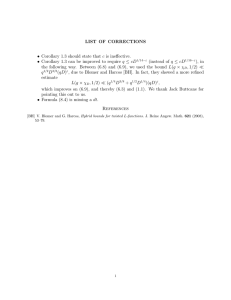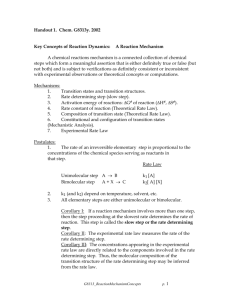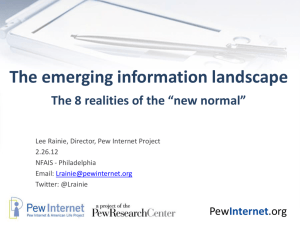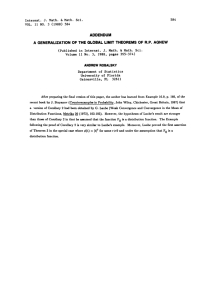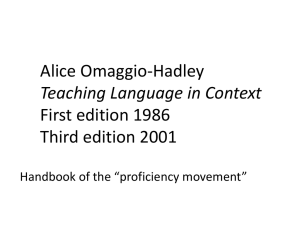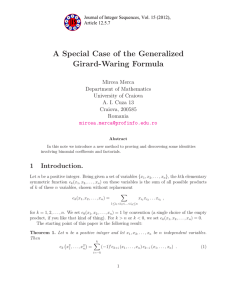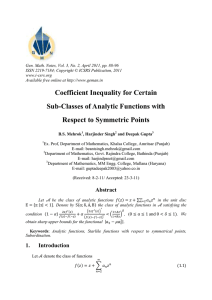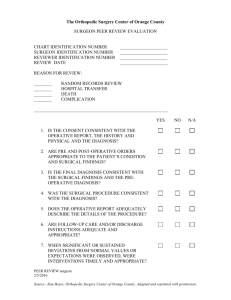downloads/m_m/Morbidity and Mortality Conference
advertisement
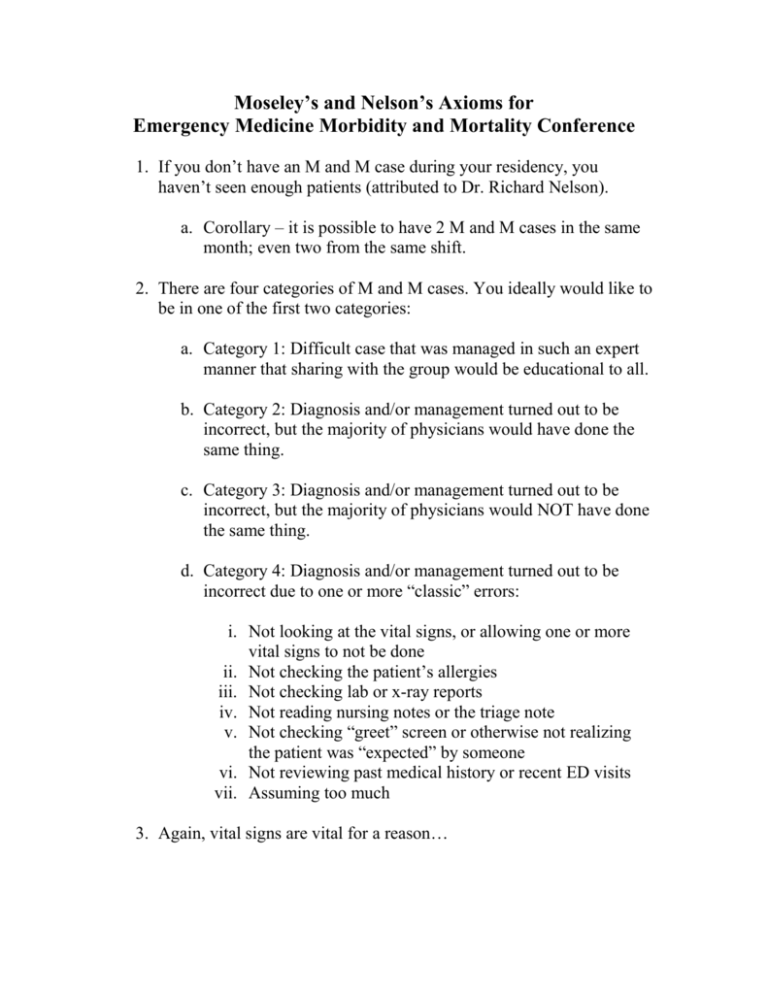
Moseley’s and Nelson’s Axioms for Emergency Medicine Morbidity and Mortality Conference 1. If you don’t have an M and M case during your residency, you haven’t seen enough patients (attributed to Dr. Richard Nelson). a. Corollary – it is possible to have 2 M and M cases in the same month; even two from the same shift. 2. There are four categories of M and M cases. You ideally would like to be in one of the first two categories: a. Category 1: Difficult case that was managed in such an expert manner that sharing with the group would be educational to all. b. Category 2: Diagnosis and/or management turned out to be incorrect, but the majority of physicians would have done the same thing. c. Category 3: Diagnosis and/or management turned out to be incorrect, but the majority of physicians would NOT have done the same thing. d. Category 4: Diagnosis and/or management turned out to be incorrect due to one or more “classic” errors: i. Not looking at the vital signs, or allowing one or more vital signs to not be done ii. Not checking the patient’s allergies iii. Not checking lab or x-ray reports iv. Not reading nursing notes or the triage note v. Not checking “greet” screen or otherwise not realizing the patient was “expected” by someone vi. Not reviewing past medical history or recent ED visits vii. Assuming too much 3. Again, vital signs are vital for a reason… 4. Have a system to deal with sign-out patients that actually includes you re-evaluating them. 5. Altered mental status is a high risk diagnosis. a. Corollary – if it is attributed to alcohol/drugs with a BAL of zero and/or a negative toxicology screen there is a problem. b. Corollary – if the patient doesn’t speak English, good luck! 6. Patients with new and abrupt onset of psychiatric illness require your full attention to rule out underlying medical illness. 7. Even frequent fliers get sick too. 8. Don’t be afraid to consult your colleagues or members of the Medical Staff. a. Corollary – It is better to hang with friends, than to hang alone. b. Corollary – Consult the Medical Staff to get their input, but don’t blindly trust in their plan of care for YOUR patient. 9. If the patient has been in the ED for longer than your shift, and you still don’t know what is going on with them, admit them (attributed to Dr. Robert O’Connor). a. Corollary – observation is a good option, but the CDU stands for Clinical Decision Unit, not the Can’t Decide Unit Recommended Reading: How Doctor’s Think. Jerome Groopman Complications: A Surgeon's Notes on an Imperfect Science. Atul Guwande Better: A Surgeon's Notes on Performance. Atul Guwande Bouncebacks! Emergency Department Cases: ED Returns. Weinstock and Longstreth

